Mercedes A-Class vs VW ID.3 – Differences & prices compared
Two cars, one duel: Mercedes A-Class meets VW ID.3.
Which one wins in performance, efficiency and value for money? Find out now!
Costs and Efficiency:
Looking at overall running costs, both models reveal some interesting differences in everyday economy.
VW ID.3 has a a bit advantage in terms of price – it starts at 28600 £, while the Mercedes A-Class costs 32300 £. That’s a price difference of around 3694 £.
As for range, the VW ID.3 performs significantly better – achieving up to 605 km, about 520 km more than the Mercedes A-Class.
Engine and Performance:
Under the bonnet, it becomes clear which model is tuned for sportiness and which one takes the lead when you hit the accelerator.
When it comes to engine power, the VW ID.3 has a barely noticeable edge – offering 326 HP compared to 320 HP. That’s roughly 6 HP more horsepower.
In acceleration from 0 to 100 km/h, the Mercedes A-Class is distinct quicker – completing the sprint in 4.70 s, while the VW ID.3 takes 5.70 s. That’s about 1 s faster.
In terms of top speed, the Mercedes A-Class performs slightly better – reaching 250 km/h, while the VW ID.3 tops out at 200 km/h. The difference is around 50 km/h.
There’s also a difference in torque: VW ID.3 pulls to a small extent stronger with 545 Nm compared to 450 Nm. That’s about 95 Nm difference.
Space and Everyday Use:
Cabin size, boot volume and payload all play a role in everyday practicality. Here, comfort and flexibility make the difference.
Both vehicles offer seating for 5 people.
In curb weight, Mercedes A-Class is clearly perceptible lighter – 1440 kg compared to 1787 kg. The difference is around 347 kg.
In terms of boot space, the VW ID.3 offers barely noticeable more room – 385 L compared to 350 L. That’s a difference of about 35 L.
In maximum load capacity, the VW ID.3 performs slight better – up to 1267 L, which is about 77 L more than the Mercedes A-Class.
When it comes to payload, Mercedes A-Class hardly perceptible takes the win – 485 kg compared to 473 kg. That’s a difference of about 12 kg.
Who comes out on top?
Overall, the VW ID.3 shows itself to be wins the duel decisively and secures the title of DriveDuel Champion.
It convinces with the more balanced overall package and proves to be the more versatile choice for everyday use.
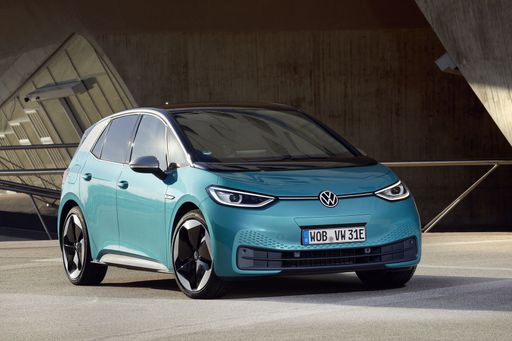
VW ID.3
Mercedes A-Class
The Mercedes-Benz A-Class is a perfect blend of luxury and practicality, offering a refined interior that boasts high-quality materials and meticulous attention to detail. It's designed with a sleek and modern aesthetic that appeals to those who appreciate both style and performance. The driving experience is enhanced by cutting-edge technology and a range of features that provide both comfort and safety on every journey.
details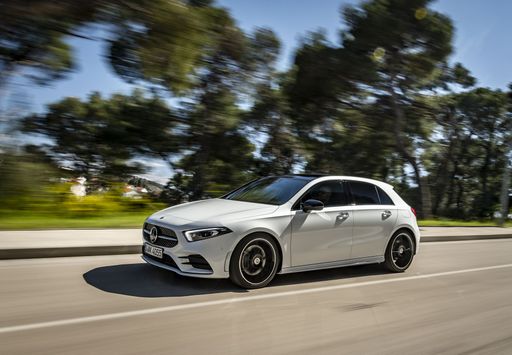 @ group-media.mercedes-benz.com
@ group-media.mercedes-benz.com
 @ group-media.mercedes-benz.com
@ group-media.mercedes-benz.com
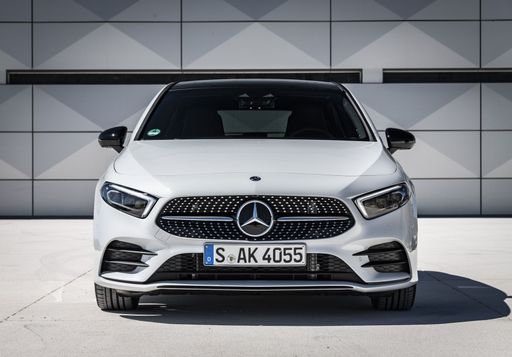 @ group-media.mercedes-benz.com
@ group-media.mercedes-benz.com
 @ group-media.mercedes-benz.com
@ group-media.mercedes-benz.com
 @ group-media.mercedes-benz.com
@ group-media.mercedes-benz.com
VW ID.3
The VW ID.3 represents Volkswagen's entry into the world of electric vehicles, offering a modern design that combines functionality with sustainability. Inside, you'll find a spacious and tech-forward interior, providing a comfortable driving experience while maintaining a focus on environmentally friendly materials. The ID.3's performance delivers a smooth and responsive feel on the road, making it a strong contender in the growing electric car market.
details @ Volkswagen
@ Volkswagen
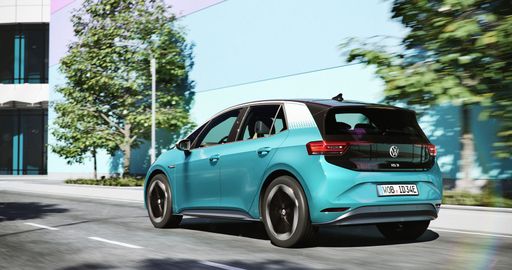 @ Volkswagen
@ Volkswagen
 @ Volkswagen
@ Volkswagen
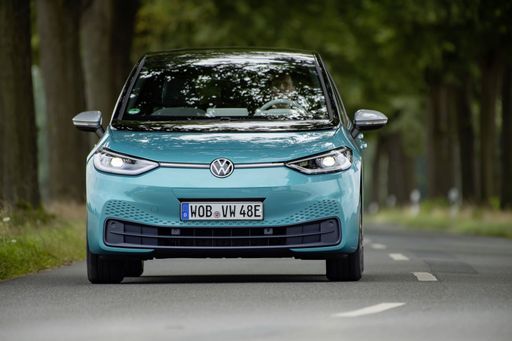 @ Volkswagen
@ Volkswagen
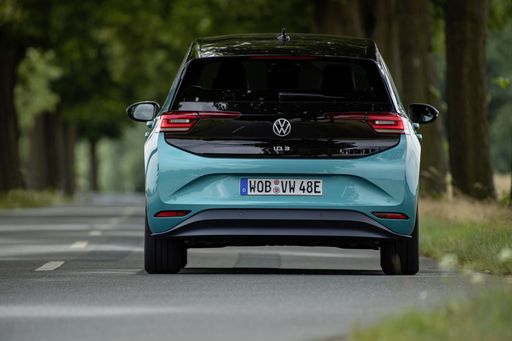 @ Volkswagen
@ Volkswagen
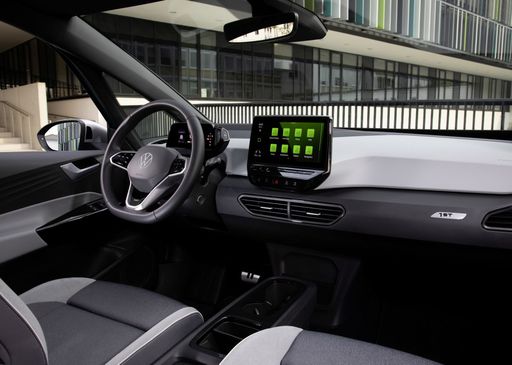 @ Volkswagen
@ Volkswagen
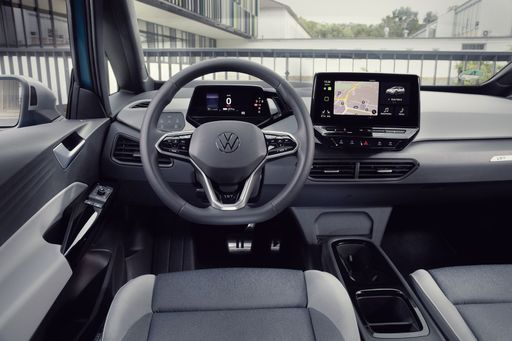 @ Volkswagen
@ Volkswagen

|

|
|
|
|
Costs and Consumption |
|
|---|---|
|
Price
32300 - 55600 £
|
Price
28600 - 49300 £
|
|
Consumption L/100km
2.3 - 8.3 L
|
Consumption L/100km
-
|
|
Consumption kWh/100km
-
|
Consumption kWh/100km
14.5 - 15.8 kWh
|
|
Electric Range
85 km
|
Electric Range
383 - 605 km
|
|
Battery Capacity
12.90 kWh
|
Battery Capacity
52 - 79 kWh
|
|
co2
53 - 188 g/km
|
co2
0 g/km
|
|
Fuel tank capacity
35 - 51 L
|
Fuel tank capacity
-
|
Dimensions and Body |
|
|---|---|
|
Body Type
Hatchback
|
Body Type
Hatchback
|
|
Seats
5
|
Seats
5
|
|
Doors
5
|
Doors
5
|
|
Curb weight
1440 - 1695 kg
|
Curb weight
1787 - 1993 kg
|
|
Trunk capacity
310 - 350 L
|
Trunk capacity
385 L
|
|
Length
4428 - 4447 mm
|
Length
4264 mm
|
|
Width
1796 mm
|
Width
1809 mm
|
|
Height
1407 - 1423 mm
|
Height
1564 mm
|
|
Max trunk capacity
1125 - 1190 L
|
Max trunk capacity
1267 L
|
|
Payload
475 - 485 kg
|
Payload
437 - 473 kg
|
Engine and Performance |
|
|---|---|
|
Engine Type
Plugin Hybrid, Petrol MHEV, Diesel
|
Engine Type
Electric
|
|
Transmission
Automatic
|
Transmission
Automatic
|
|
Transmission Detail
Dual-Clutch Automatic
|
Transmission Detail
Reduction Gearbox
|
|
Drive Type
Front-Wheel Drive, All-Wheel Drive
|
Drive Type
Rear-Wheel Drive
|
|
Power HP
116 - 320 HP
|
Power HP
170 - 326 HP
|
|
Acceleration 0-100km/h
4.7 - 9.7 s
|
Acceleration 0-100km/h
5.7 - 8.2 s
|
|
Max Speed
202 - 250 km/h
|
Max Speed
160 - 200 km/h
|
|
Torque
200 - 450 Nm
|
Torque
310 - 545 Nm
|
|
Number of Cylinders
4
|
Number of Cylinders
-
|
|
Power kW
85 - 235 kW
|
Power kW
125 - 240 kW
|
|
Engine capacity
1332 - 1991 cm3
|
Engine capacity
-
|
General |
|
|---|---|
|
Model Year
2024 - 2025
|
Model Year
2024 - 2025
|
|
CO2 Efficiency Class
B, D, E, G
|
CO2 Efficiency Class
A
|
|
Brand
Mercedes-Benz
|
Brand
VW
|
Is the Mercedes A-Class offered with different drivetrains?
Available configurations include Front-Wheel Drive or All-Wheel Drive.
The prices and data displayed are estimates based on German list prices and may vary by country. This information is not legally binding.
